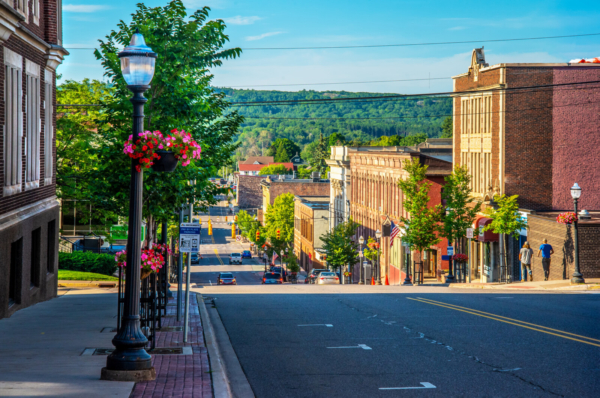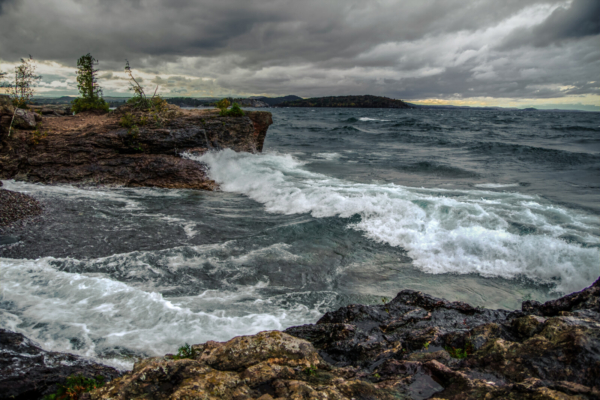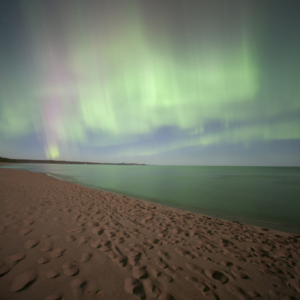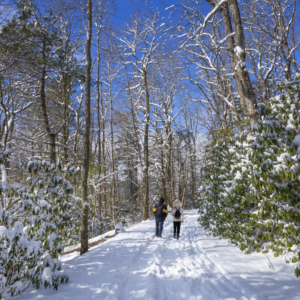The Marquette area was first inhabited by the Anishinaabe people, before becoming known to French missionaries in the early 17th century and trappers in the early 19th century. Although the area had been officially “discovered” by the French, the harbor was used for rest, fishing, and transport for both the French voyageurs and the Anishinaabe people for many centuries preceding them. It was not until the discovery of iron ore in the mid-1800s that the area was “officially” settled.
early 17th century and trappers in the early 19th century. Although the area had been officially “discovered” by the French, the harbor was used for rest, fishing, and transport for both the French voyageurs and the Anishinaabe people for many centuries preceding them. It was not until the discovery of iron ore in the mid-1800s that the area was “officially” settled.
In 1849 iron ore was discovered in the area, and the Marquette Iron Company promptly founded the village of Iron Bay. later renamed to Marquette, to provide settlement opportunities for workers. A second mining company came to the area, the Cleveland-Cliffs Company. The Cleveland-Cliffs Company outlasted the Marquette Iron Company and renamed the town Marquette in honor of the French Jesuit missionary who had explored the area, Jacques Marquette. The village was platted in 1854, incorporated as a village in 1859, and as a city in 1871. The city of Marquette began as a shipping port for hematite ores and to this day continues to serve as a port for enriched iron pellets from nearby mines.
In 1899 Northern Normal School, a teacher’s college, was founded in Marquette. The college is now known as Northern Michigan University which still has a fantastic teaching program along with a flourishing nursing program. It’s pre-med and computer science programs are noteworthy as well.
In the late 19th century Marquette began to be known as a summer haven, with many passenger steamships and trains stopping in the city. Marquette is still a bustling summer town but has grown its reputation as a year-round escape for outdoor enthusiasts and those seeking a place to relax. It is the largest city in the U.P. with a population of approximately twenty thousand and has stayed true to its entrepreneurial roots, encouraging many young business owners to make Marquette their home base creating a vibrant and welcoming dynamic. Though Marquette has grown significantly in the past decade, it has not lost its charm, characterized by its natural beauty, easy access to the beautiful outdoors, and friendly, community-oriented, residents. Marquette was named one of “America’s Most Livable Communities.”
The downtown has a variety of eating options from German-inspired food at the Steinhause to specialty pastries at the 231 West Patisserie and is also home to many imaginative art galleries. In addition to the shops, the downtown hosts a wide variety of events from Blueberry Fest and Art on the Rocks in July to the U.P. 200 Sleddog race in January. Other local events include the Hiawatha Music Festival, the Ore to Shore bike race, and the Noquemanon ski race.
West Patisserie and is also home to many imaginative art galleries. In addition to the shops, the downtown hosts a wide variety of events from Blueberry Fest and Art on the Rocks in July to the U.P. 200 Sleddog race in January. Other local events include the Hiawatha Music Festival, the Ore to Shore bike race, and the Noquemanon ski race.
The access, quantity, and quality of the trails systems around Marquette increase every year. There are two main trailheads within the city limits, North Trails and South Trails, with 30 miles and 45 miles, respectively, of singletrack mountain bike trials with options for any skill set. Some of those same trails are also groomed in the winter for fat-tire biking. In 2014, the NTN Singletrack trails were awarded status as an International Mountain Bicycling Association (IMBA) Ride Center, one of only two in Michigan. Some of the trails are also open to hiking with many other great hiking options in the area including Sugarloaf Mt or Hogsback Mountain. In the winter, the Marquette area offers easy access to cross-country and downhill skiing along with snowshoeing, ice fishing, and snowmobiling.
To learn more about the Marquette Area, follow the links below:
Sources:
- Travel Marquette
- City of Marquette
- Make it Marquette
- Noquemanon Trails Network


